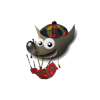| Welcome, Guest |
You have to register before you can post on our site.
|
|
|
| AI items does not appear |
|
Posted by: charlie84 - 03-27-2024, 03:49 PM - Forum: Extending the GIMP
- Replies (14)
|
 |
Hi, I installed the STABLEHORDE plugin in Gimp 2.10.36 for mac M1 and s.o. Sonoma 14.4.1 but the AI item does not appear in the menu. Do you have any suggestions? (I copied the gimp-stable-diffusion-horde.py file to the Library > Application Support > GIMP > 2.10 > plu-ins folder)
|

|
|
| Darktable |
|
Posted by: pvalley - 03-26-2024, 12:09 AM - Forum: Extending the GIMP
- Replies (2)
|
 |
I'm using Gimp 2.10.36 and have darktable installed but gimp is not seeing the CR2 files and loading darktable where am I going wrong?
pvalley
|

|
|
| Gimp 2.10 on Debian: Xsane not being detected |
|
Posted by: rnturner - 03-25-2024, 11:05 PM - Forum: General questions
- Replies (2)
|
 |
I have a recent Debian 12.5 (Bookworm) install that included a Gimp 2.10 binary. Xsane 0.999 is installed but when I try and use the File->Create function, Gimp is running xscanimage. Which might be fine if it didn't crash when you click on "Acquire preview".
I've tried the symlink trick in ~/.gimp-2.10/plug-ins/ but so far xscanimage is the only thing Gimp is seeing. I've verified that the symlink is pointing to /usr/bin/xsane and if I "cd" to the plugins directory and issue "./xsane" it does launch Xsane. If I can invoke it manually, Gimp ought to be able to, right? Instead, Gimp is fixated on "xscanimage" which doesn't exist on the system as far as I've been able to to determine. (Oddly there is a manpage for it that is almost identical to the xsane manpage.)
Is the problem with Gimp 2.10? Or Xsane?
Is there any hope to get 2.10 up and running with my Epson scanner. It's a Perfection 2400 Photo and has worked with 2.x+Xsane on other Linux distributions for a number of years.
Ping me if any additional information is needed.
TIA for any help...
--
Rick
|

|
|
| Shift-S to resize not working |
|
Posted by: buzzie44 - 03-24-2024, 06:21 PM - Forum: General questions
- Replies (6)
|
 |
Downloaded updates to Gimp yesterday. The Shift-S resizing doesn't work.
I get no corners on the image to resize it. Find it hard to believe this is a bug
but can't figure out what preferences/buttons I pushed to change this
function that I never had problems with in the past. Any help would
be appreciated.
|

|
|
| [Feature request] Include resizing in Export options |
|
Posted by: Aszazin - 03-24-2024, 11:29 AM - Forum: General questions
- Replies (5)
|
 |
When I use export, I often have to export within certain file size limitations.
Sometimes to achieve this, I need to resize the image.
At this moment, when I see on exporting the file size is too large, I need to cancel the export, resize and then export again.
This also has the disadvantage that I have to Undo the resize after export, when I don't want the original to be smaller.
I think resizing should be considered an option that is available on export.
After all, if you export/render video, or audio, it is standard procedure to define the screen size (video) or samplerate/bitrate (audio) in any program around.
Why shouldn't this be the case for images?
|

|
|
|